Introduction to Gem Medicines
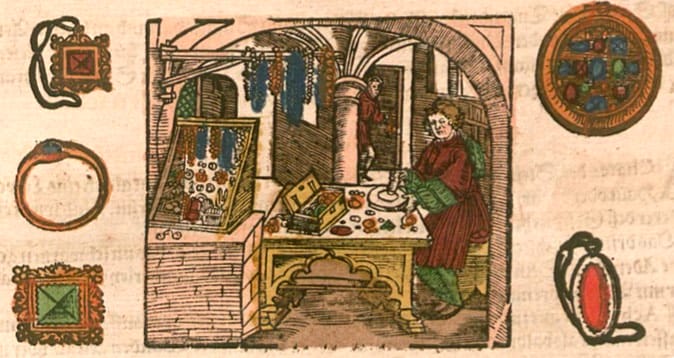 Head Illustration from the Chapter on Medicines from Stones and Gems,
Head Illustration from the Chapter on Medicines from Stones and Gems,Krauterbuch, Lonitzer, 1578
Introduction to Gems
Various Gems and Precious Stones have been used in all Traditional Medicine Systems. Their use is especially prevalent in Unani and Tibetan Medicine, and it is most likely the Tibetans were heavily influenced by the Arabs with their use of Gems.
The most commonly used and most applicable of the Gems are Pearl, Red Coral and Amber. These stones are softer, more friable, and therefore easier to prepare and safer to use. The harder Gems such as Ruby, Sapphire and Emerald may be used only after careful preparation. If consumed while the particles are too large they are likely to cause internal Bleeding, Granulation and other unwanted side effects.
Gems are principally classified based on their form, color and hardness, and specific gravity. Modern mineralogist also look at fracture, luster, refraction, luminescence, Transparency etc., but these are not so relevant to us.
Form
The form of a gem helps with its identification. Many gems form with a specific crystal structure, while others form in mass without a crystal pattern, such as the Chalcedony group (including Agate, Jasper, Bloodstone etc.).
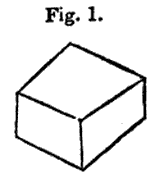
|
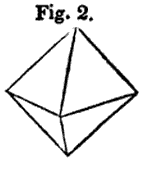
|
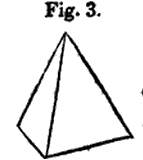
|
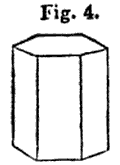
|
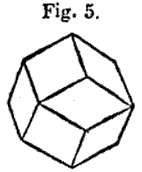
|
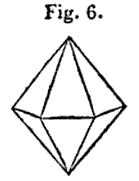
|
Color
Color is very important as far as the use of gems in medicine, as quite often the nature of gems was based largely on their color, with different ‘species’ of the gem often being totally different minerals. Red Spinel, Garnet and Red Zircon were all used for ‘Ruby’, Green Beryl, Green Garnet and even Prase were used for Emerald. Likewise several golden stones were used for Topaz.
Color is divided into 1. Metallic and 2. Non-Metallic colors. The Metallic colors are colors of the various metals including Gold, Silver, Steel, Brass, Copper etc. None-Metallic colors are divided into 8 basic colors. The following list hints at stones which may have been used in place of the rarer or more valuable gems, as well as softer substitutes for very hard stones.
The Associations of the Colors
|
COLOR Red Yellow Orange Green Blue Black White |
ELEMENT Fire Earth Earth Wood/Air Water Water Metal/Earth |
ORGAN Heart, Pericardium Stomach Spleen Stomach, Spleen Liver Kidney Kidney Lung |
CHAKRA Root Solar Plexis Navel Heart/Solar Plexis Throat / Third Eye Root Crown |
EXAMPLE Red Coral, Garnet, Carnelian, Ruby Amber, Yellow Calcite Amber, Carnelian Emerald, Turquoise Sapphire, lapis Lazuli, Azurite Jet, Shilajit Gypsum, Calcite, Selenite, Pearl |
Stones of the Colors
|
1. Limpid / Colorless: Diamond Zircon Sapphire Topaz Beryl Crystal 2. Red Ruby Sapphire Garnet Zircon Spinel Topaz Tourmaline Carnelian 3. Yellow Sapphire Oriental Topaz Zircon Beryl 4. Green Emerald Sapphire Zircon Chrysoberyl Spinel Topaz Beryl Prase Chrysoprase Feldspar |
5. Blue Sapphire Topaz Spinel Beryl Turquoise Lapis Lazuli 6. Violet Sapphire Garnet Spinel Toumaline Flourite Amethyst 7. Brown Zircon Garnet Tourmaline Jasper 8. Black Tourmaline Diamond Jet |
Hardness
The hardness of a mineral helps with identification, and also has a direct impact on the medicinal use.
A table of the hardness of minerals, including Gems, can be found here. However, for our purposes, we can divided Gems into Hard, Semi-Hard, and Soft:
|
Hard: Diamond Topaz Sapphire Emerald Ruby Zircon Beryl Chrysoberyl Spinel Garnet |
Semi-Hard Crystal Amethyst Bloodstone Carnelian Agate Flint Chrysolite Opal Lapis Lazuli Turquoise |
Soft Flourospar Selenite Malachite Azurite Amber Jet Pearl Coral |
Soft stones can be powdered in a mortar and pestle, or a modern grinder. They generally only require a fine sieve to separate the fine powder. Semi-hard stones require a little more diligence in their powdering, and are often quenched a number of times before grinding with a liquid in a mortar and pestle. Hard stones need to be carefully prepared. While most are not chemically toxic, they can cause serious injury if not reduced into very fine powder.
Taste and Smell
Some stones have an obvious taste or smell. For example, Sulphur, the saltiness of Rock Salt and the aromatic pine-like scent of Amber. However, most stones have no smell. Different stones have different taste and qualities. The gems in general are regarded as slightly sweet.
Specific Gravity
Specific Gravity is the ratio of density of something compared to its own bulk of water. It is very important, along with color and crystal form, in the identification of gems. It appears to have been known from about the 13th century, meaning that the ancients didn’t have this essential tool in classifying gems.
Medicinal Gems with their approximate specific gravity:
Zircon, 4.4
Garnet, 4
Sapphire, 3.9
Diamond, 3.5
Topaz, 3.5
Tourmaline, 3
Turquoise, 2.8
Beryl, 2.6
Crystal, 2.6
Chalcedony, 2.6
Carnelian, 2.5
Lapis Lazuli, 2.3
Opal, 2
Phosphorescence
Many gems give off light when heated, rubbed or exposed to sun light. Diamond demonstrates this property when rubbed with wool; Quartz, when 2 pieces are rubbed together; Dolomite when scratched with iron; Diamond and white Topaz when held in the hand; Diamond, Amber and Feldspar when exposed to the rays of the Sun.
It is interesting that ancient writers sometimes referred to an internal ‘light’ in gems being responsible for their benefits. For example, Tibetan Medicine practitioners say that ‘non-visible light’ of various gems is responsible for their healing qualities and this may, in part, be related to the the phosphorescence demonstrated by many of the gems
Electrical Properties
It is also interesting to note that various gems display interesting electrical properties. Electricity may be generated with heat, friction or pressure. Quartz, Mica and Sapphire generate electricity when simply held in the hand; Tourmaline and Topaz when heated. Some gems, such as Brazilian Topaz, has demonstrated the ability to hold a charge, once generated, for up to 32 hours. Amber creates static electricity when rubbed on cloth.
Most crystals display electrical properties with a positive and a negative end. The end with the greatest number of faces is always positive.
The Medicinal Use of Gems
Preparation
Gems and Stones are generally prepared one of two ways:
- Levigation: where they are ground finely with a liquid, often Rose water, in a Mortar and Pestle. This is generally continued for days until no particles can be felt when rubbed between the fingertips.
- Reduction: where fire is used to reduce the stones to an ash. By the Renaissance this was often achieved using ‘potential’ heat of acids. For example, a Gem can be dissolved in an appropriate acid to reduce to finite particles. The remnants are then washed well to remove the acid residue. But they can also be burnt with ‘actual’ heat, the heat of Fire. This process is particularly well established in Ayurveda where powdered Gems, Stones or Metals are formed into little discs which are then sealed between clay plates, and burnt in a fire, traditionally made of dried Cow dung cakes. The ashes, known as Bhasma, are then collected for use.
The softer stones of Pearl, Coral and Amber are generally used in levigated state, and while the former two medicines can be burnt, Amber is never burnt. All other stones, including the precious Gems can be reduced to powder by levigating, but are generally preferred to be reduced with ‘actual heat’ (fire) or ‘potential heat’ (acids) to fully ‘open’ them and allow them to be taken internally with both efficacy and safety. Nevertheless, levigation has been used as a primary way of reducing even the hard gems. This may require 10 days or more of grinding with liquid in a mortar.
Some authors claimed that heat destroyed the ‘Radical Moisture‘ (Yin or Essence) of the stone and preferred laborious trituration for days. This is especially true of Pearl and Red Coral which are still prepared as Bhasma (ash) in India, while Western authors including Salmon said that these should not be burned as fire destroys some of their virtue.
In all cases, the finely prepared powder needs to be sieved. This was traditionally done using silk sieves where the silk would ‘capture’ any sharp fragments, allowing only totally reduced powder through.
Another important and useful method which may be applied to levigated powders is to add the powder to a glass of water, stir the water to cause a suspension. After a second or two, pour off the water leaving the sediment in the bottom. The water is dried leaving an extremely fine powder which is fine enough to be in suspension when the water is poured off. The sediment is again triturated and the procedure repeated. Only the finest dust remains suspended, and heavier particles sinking to the bottom.
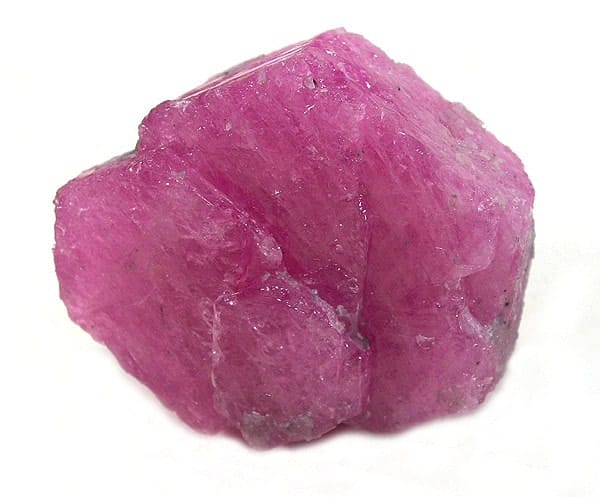
|
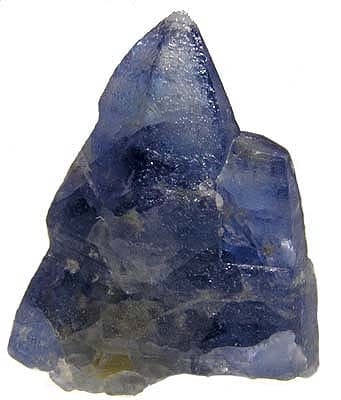
|
Photos by Rob Lavinsky iRocks.com
The Way Stones Work
Most Stones, in general, are Cold, dry and heavy. Their Coldness allies Heat, their dryness, Phlegm and Damp, while their heaviness and Earthy nature weigh down and settle Qi and stop Wind. These effects, together, make Stones potent medicines for compound disorders where Heat/Bile, Phlegm/Damp and Qi/Wind are involved.
In addition, all Stones have powerful planetary associations, which are associated with their color:
- Sun–Yellow; Amber, Garnet, Chrysolite, Yellow Zircon (Jacinth), Topaz
- Moon–White; Pearl, Selenite, Moonstone
- Venus–Blue; Emerald, Sapphire, Beryl, Lapis Lazuli
- Mars–Red; Ruby, Red Coral, Jasper, Carnelian
- Jupiter–Violet; Topaz, Carnelian, Amethyst, Flourite
- Mercury–Green; Emerald, Turquoise, Agate
- Saturn–Black; Jet, Diamond, Sapphire
Each Planet has a connection with various bodily systems, organs, humors and diseases. The Gem associated with a given Planet is regarded as having a special connection with that planet, and therefore, Gems work potently in the body. In fact in India today, the belief that a certain Gem worn on a specific finger can correct a planetary imbalance inherited from the time of Birth is still widely accepted.
Likewise, the correct stone prepared and taken internally can correct weakness of an Organ or system based on its planetary associates. Medical Astrologers look for weakness in the birth chart and aim to correct a weak or ill positioned planet. This is part of the reason why Tibetan Jewel Pills are regarded as have potent and long-lasting effects, meaning a pill can be taken just once per week, yet have profound and deep influence. You can also find traditional healers in India who diagnose imbalances in the birth chart and ‘prescribe’ a certain stone to be worn on a particular finger to treat the imbalance. I have met such practitioners personally, particularly around Jaipur in Rajasthan, India. Each had amazing stories, some at least partly verified, of amazing healing that took place as a result.
Stones are also thought of as working through subtle vibrations, and due to their ‘invisible light’, according to Tibetan Medicine. Once in the body, their effect is potent and long-lasting, far longer than herbal medicines. In Tibet, ‘Jewel Pills’ may be given once weekly, or even once monthly, based on the premise that their effect will last for days or weeks after they are consumed.
Finally, Gems and Stones can be thought of as working partly due to their mineral composition, and particularly their trace minerals.
Composition
Gems and Stones can be generally grouped into one of several categories based on their composition:
- Calcium–Calcite, Pearl, Red Coral
- Aluminium–a number of gems are based on Aluminium oxide; Ruby and Sapphire are examples; Emerald is a compound of Aluminium and Beryllium. Earths are also primarily Aluminium silicates.
- Silica–Crystal and the Chalcedony group are based on silicates; this includes Jasper, Agate, Bloodstone, Onyx
- Organic complexes–Amber is an organic complex; Pearl and Coral also contain organic complexes
Perhaps the most important physical component of most, if not all Gem and Stone medicines is their trace elements. For example, traces of chromium supply the brilliant green of the emerald, and iron oxide gives the red of red coral; Pearl, coming from the ocean contains traces of many minerals; and the various colors of chalcedony are due to traces of varying minerals.
An interesting stone is Zircon, which includes varieties such as Hyacinth and Jacinth, used in Traditional Medicine. The stone is composed of Zirconium silicate, but can contain a host a rare earths and rare elements such as Hafnium (up to 2%), some even including traces of Uranium and Thorium. Some of its trace compounds are radioactive (although in a very low degree), meaning that this is possibly the first used internal radioactive medicine. It is probable that the small amounts used internally pose no health risks, although due to lack of research, its safety is uncertain. It can be noted that some famous mineral waters such of those of Baden Baden in Germany, are also known to contain traces of radioactive minerals and yet are still widely used for their healing qualities.
Garnet is another interesting stone. There are a number of different mineral types of Garnet, but the Garnets are known to have complex mineral composition, and can contain traces of many different metals.
There is no doubt that the trace mineral component of many gems and minerals traditionally used in medicine may play a role in their medicinal effects, from a biomedical and scientific viewpoint.
Dose and Mode of Administration
Gems and Stones are generally used in small doses, and usually only in formula. In Unani and Tibetan Medicine, compounds containing Gems are often very large, sometimes containing upwards of 100 medicines, but usually at least 20 or 30 individual medicines, and often composed of animal, mineral and vegetable medicines.
Doses are usually 60–125mg, but in formula the dose is often much smaller.
Due to their crystal structure and planetary associations, they were believed to have a long-lasting and deep effect on the mind, body and spirit. Their energetic effect means that their presence in a formula is actually more important than the dose.
The best ways of administering are in Pills or Electuaries (powders mixed into Honey to form a paste), but they are also sometimes given in compound powders. They are basically always combined with Herbal ingredients to aid assimilation and digestion and increase their efficacy.
As noted above, the Rin Chen or Precious (or Jewel) Pills of Tibetan Medicine, which always contain various Gems in combination with a number of herbal medicines, are routinely given at intervals of once-per-week to one-per-month. In acute cases they maybe administered daily, but due to their regular use in chronic and obstinate diseases, they are routinely used in doses of 1–4 pills per month (once weekly to once monthly). This is largely due to the prolonged effect that is expected from the use of stone medicines.
Furthermore, the Tibetan Jewel Pills are taken on auspicious days, such as the Full or New Moon.
Digestibility and Nano-particles
A key issue with the use of Metals, Minerals and Gems is their ability to be digested and absorbed, as well as their ‘heaviness’ and difficulty of digestion which can weaken the stomach.
This is largely countered by reduction; that is, reducing the mineral to its finest particle size which is now known as nanoparticles, particulate size in microns. The processes used in traditional medicine often achieved this. Burning a stone, especially with sulphur or saltpeter, can reduce some stones to nanoparticles. Dissolving a stone in an acid then drying or precipitating can likewise achieve nano-particle size.
The most interesting preparations are Bhasma and Kushta preparations of Ayurveda and Unani medicines respectively. These elaborate preparations, involving use of plant matter forming powdered minerals into coin-sized discs which are dried and burnt in sealed clay pans, often a number of times. The traditional heat source is a pile of dried cow dung cakes (which is still a common fuel in India). These preparations have been recently investigated and found to produce nanoparticle size preparations. These small particles can enter into cells and have medicinal effects different to the same mineral in coarser form with larger particles.
These types of preparations mean the mineral can be absorbed effectively with relatively little deleterious effect on digestion.
Nonetheless, any type of mineral preparation is still harder to digest than an organic plant preparation. This is countered by the use of digestive medicines such as Ginger and Pepper, or using a form such as an Electuary where powers are mixed with Honey into a paste.
Safety
Most of the stones, in themselves, are not toxic. The danger lies in the fact that if they are not properly prepared (reduced), small splinters of very hard and sharp substance can cause internal damage, bleeding and granuloma.
One of the outstanding exceptions is Emerald. Due to the presence of beryllium which is toxic, it could be toxic even when prepared adequately. It must be noted, however, that it has been used in several systems for many centuries, and is almost always given in minute doses with numerous other medicines as part of a larger formula. However, other green stones were used in place of Emerald and they would be preferred today due to their lack of beryllium.
Overview of the Primary Gem Medicines
The following is a brief list of the functions and uses of Gem medicines, derived from various sources.
|
Amber Cold, Dry -semi-fossilised (cross-polimerized) tree resin containing organic complexes -Calms the Mind and Nerves; Insomnia, Forgetfulness, Vertigo -Benefits the Heart and circulation; Palpitations, Heart disease -Moves the Blood, benefits the Uterus; diseases of the Uterus; promotes Labor, useful Postpartum; promotes Fertility -Stops Bleeding -Promotes Urine; painful Urination, Incontinence, Stones -Benefits Lungs; Cough, Asthma, Consumption Pearl Cold, dry, astringent -Calms the Mind and Nerves; Insomnia, Anxiety, Fretting in Children -Clears Heat; Fevers, especially in Children -Stops Wind; Convulsions, especially in children; Vertigo -Benefits Yin; Old Age, chronic Disease, Wasting, Consumption -Also to Benefit Women and increase their Beauty; used topically to give the Skin a Pearl-like radiance -Benefits Eyes; topically for growths and films of the Eyes Red Coral Cold, dry, astringent -Calms the Mind and Nerves; Anxiety, Insomnia, Madness -Stops Wind; Dizziness, Vertigo, Epilepsy -Stops Bleeding from Heat -Clears Heat, Resists Poison; Fevers, Heat diseases -Heat-type Cough and Asthma, especially in Children -Benefits Yin; chronic disease, chronic Fever, Consumption, Emaciation -Used to promote Fertility and stop Miscarriage Carnelian Cold, dry -red variety of chalcedony -Benefits Heart; Palpitations, Tachycardia -Calms Mind and Nerves; promotes Cheerfulness, resists Anger, for Insomnia and Nightmares -Stops Bleeding -regarded as an Eye tonic in Unani Bloodstone Cold, dry -green variety of chalcedony with red spots -Stops Bleeding; used for various types of Bleeding from Heat, especially excess Menstruation; also prevents Miscarriage -Resists Poison; used for various Poisons -used for Eye disorders coming from Heat in Ayurveda Agate Cold, dry Banded Chalcedony -Strengthens Heart -Calms the Mind and Nerves; Anxiety, Depression, Lunacy -Clears Heat, Resists Poison; used for Fever, Poison, Infectious diseases including Plague; also Venomous bites -Yin Deficiency with Heat -Bleeding from Heat, especially excess Menstruation -Eye disorders coming from Heat; strengthens the Eyes Jasper Cold, dry -Promotes Urine; Edema and other watery diseases -Prevents Miscarriage, stops Postpartum Bleeding -Calms the Mind and Nerves; Epilepsy, Convulsions, Nightmares -Stops Bleeding from Heat, especially excess Menstruation and Postpartum Bleeding -Resists Poison; Fever, Venomous Bites Onyx Cold, dry -Strengthens Heart; -Calms the Mind and Nerves; Sadness, Nightmares Turquoise Cold, dry, Sweet -Clears Heat, benefits the Liver; regarded as an essential medicines for serious and chronic Liver disease in Tibet; Hepatitis, Cirrhosis, Liver Tumors -Benefits the Heart, clears Heat; Palpitations -Calms the Mind and Nerves; Melancholy, Anxiety, Mental disorders -Resists Poison –regarded as a tonic to the Vital Organs in Unani and Ayurveda -Strengthens Eyesight -Used for Heat of the Lungs (Tibetan Medicine) Lapis Lazuli Cold, dry NOTE: the powder is well washed for internal use. -Special for purging Melancholy; chronic skin diseases, Leprosy, Fibroid Tumors, Cancer, Chronic Fevers -Calms the Mind and Nerves, resists Melancholy; Headaches, Migraine, Epilepsy, Vertigo; Mental Illness, Madness, Neurosis, Insomnia -Clears Heat and Poison; Fevers, especially Quartan Fever -Obstinate Urinary diseases including Diabetes (Ayurveda) |
Opal Cold, dry, but contains more moisture than most stones; Sweet -Calms the Mind and Nerves; prevents Despondency -strengthens the Heart, promotes Circulation -Strengthens the Body -Resists Poison; Fever, preserves from Infection -claimed to have the benefits of all precious stones as it contains all (or most) colors -also regarded as specific for diseases associated with Evil Spirits Emerald -mixture of aluminium with beryllium -Benefits Liver, clear Heat and Wind; Epilepsy, Vertigo, Headache, Anger -Heart disorders -Strengthens Mind; increases Intellect, aids Wisdom -Calms Mind and Nerves; Madness, Frenzy, Insanity, Melancholy -Strengthens Eyes -Clears Heat and Poison; Fevers, Infectious Diseases, Venomous Bites -Tonic to the whole body, increases Essence Note: Emerald contains Beryllium which is toxic Substitutes: Prase, Chrysoprase (both green varieties of Chalcedony) Ruby Cold, dry -Clears Heat and Poison; Fever, Infectious Diseases, Poisons -Benefits Heart and Circulation, Palpitations -Benefits Mind and Spirit; increases Intellect, makes one Cheerful, alleviates Nightmares -Strengthens the whole Body; Rasayana (tonic to the 7 tissues) and Essence tonic -Restrains Lust Sapphire Cold, dry -Clears Heat, Resists Poison; Fever, Plague; also Skin diseases -Calms Mind and Nerves; causes a peaceful Mind, Melancholy, alleviates Fear -Benefits Brain; increases Intelligence, benefits Senses -Benefits the Heart; Palpitations, Tachycardia -Benefits the whole Body; said to keep the Body strong and used for chronic weakness and chronic diseases -Stops Bleeding and Leakages -used for Pains including Neuralgia, Sciatica, Rheumatism (Bhasma) -Restrains Lust Zircon -called Hyacinth (reddish or red-brown), Jacinth (dark yellow or amber-colored) -Calms Mind and Nerves; Insomnia, increases Wisdom, Insanity -Strengthens the Heart; Palpitations, Nervousness -Resists Poison; Fever, Poison, Plague -Convulsions -Stops Bleeding Garnet Cold, dry -Clears Heat, resists Poison; Fever, Plague, Poison -Benefits Heart; Palpitations, Tachycardia -Benefits Mind and Nerves; Melancholy, Sadness -Stops Bleeding -also for Stones Topaz Cold, dry -Clears Heat, resists Poison; Fever, Poison, Plague, Leprosy, Venomous Bites -Calms Mind and Spirit; Insomnia, Madness, Insanity, Night Terrors; promotes Intelligence -Stops Bleeding Jade Cold, dry -Promotes Urine, clears Stones -clears Heat and Poison; Fever, Venomous Bites; a charm for Protection when worn. -Bleeding from Heat -Asthma Diamond Cold, dry -Diamond was too hard to be used internally by way of levigation; however, Ayurveda has prepared Bhasma (ashes) of it where it is regarded as useful against severe and obstinate diseases including Cancer, and more recently, HIV/AIDS. Tourmaline Cool, dry. Has all 6 tastes. –Rasayana (Tonic to the 7 Body Constituents); used for weakness, anemia, chronic and obstinate diseases. -Used as a substitute for Diamond Bhasma -Obstinate Urinary diseases including Diabetes -Cough, Bronchitis, Asthma, Tuberculosis -Nervousness; increases Intelligence and Wit |
Sample Gem Formulas
Mineral Hardness
Temperature of Medicines
Hot or Cold? The Temperature of Medicines
Directing Medicines
Tastes of Medicines
Medicines used in the Various Systems
|
MedicineTraditions has a full range of Gem & Mineral Monographs, as well as a large number of Traditional Formulas which use Gems & Minerals, available with Subscription. Subscribe for full access and to support MedicineTraditions to continue to grow bigger & better! |

|
Bibliography
- A Treatise on Gems, Dr. Lewis Feuchtwagner, 1838
- The Healing Power of Gemstones in Tantra, Ayurveda and Astrology, Harish Johari, Destiny Books, 1996
- Essentials of Ayurveda, Priya Vrat Sharma, Delhi, 1993
- Ashok, Dr. D, An English version of Rasaratna Samuchchaya (no year given)
- Rasamritam, Damodar Joshi, 1998
- Alchemy and Metallic Medicines in Ayurveda, Vaidya Bhagwan Dash, Delhi, 1986
- Pharmacopeia Londinensis, Salmon, 1696
- Seplasium, The Compleat English Physician, Salmon, 1693
- Schroder, Dr. John, The Compleat Chymical Dispensatory, translated by William Rowland, London, 1669.
- Bensky, Chinese Materia Medica, 3rd Edition
- Hand Book on Unani Medicines, with Formulae, Processes, Uses and Analysis, NIIR Board of Consultants and Engineers, Asia Pacific Business Press (No publication year given)
- Mineral Drugs used in Ayurveda and Unani Medicine, S.B. Vohora and Mohammad Athar, Narosa Publishing, India, 2008
- Tibetan Medicine; a series of Journals published by Library of Tibetan Works between 1980-1985
- Lectures on Tibetan Medicine by Lady Dr. Lobsang Dolma Khangkar, compiled and edited by K. Dhondup, Library of Tibetan Works and Archives, Dharamsala, India, 1991
- Personal visit by Adam to the Tibetan Library of Tibetan Works and Archives, Dharamsala, 1996, and information gathered in India 1996–2006.
